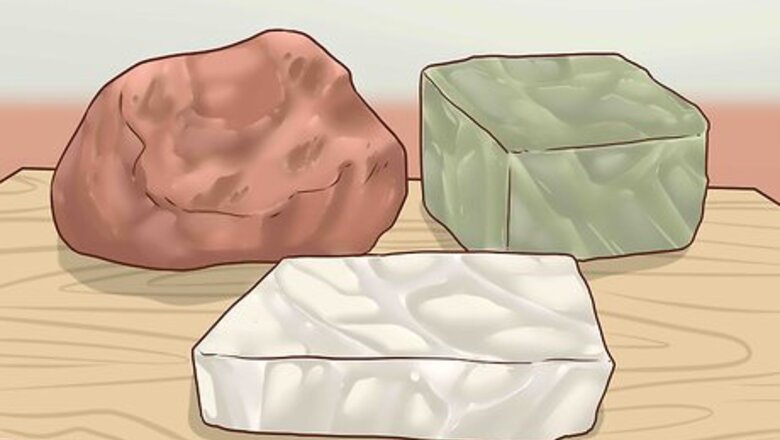
views
Planning Your Sculpture
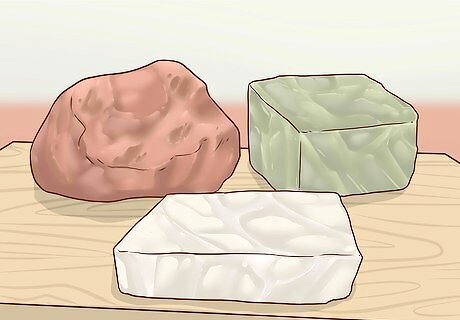
Choose your clay. You have several options when choosing a modelling clay to sculpt your face. Each clay is different, so choose the clay that best suits your purposes. Ceramic clays are water-based and easy to work with right out of the bag. It needs to stay moist while being worked, as it can dry out and crack. Ceramic clay can also be fire hardened to make a permanent sculpture. Plasteline clay is an oil-based clay that doesn't dry out, and can't be fire hardened. It is popular with special effects crews for its ability to hold high levels of detail. Polymer clays require an armature, or a wire skeleton, for support. They are weaker than other clays, but are good for painting. Polymer clays can be fire hardened, though they are not as hard as ceramic clays.

Gather supplies. Aside from the clay, you'll need a few other things before you can start sculpting. A good, clean working area is necessary, as are a few tools to help you add detail to your sculpture. You can buy sculpting tools from most craft stores. You don't have to buy specialized tools for sculpting. It may be possible to find other utensils that serve the same purpose. The main functions of your tools are to cut, scrape, and shape the clay. You can use sewing needles to draw fine lines in your clay, and add detail.
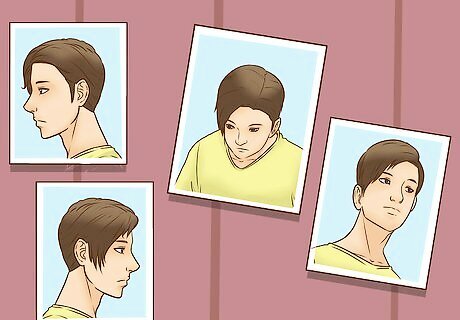
Study your subject. If you know the person whose face you are sculpting, take pictures of them from all angles. Try to get some good straight shots of your subject looking straight at the camera. Take some from the side as well to get a good profile. If you're basing your sculpture on a famous person, find photos on the internet and print them out. Make sure you have a variety of angles to get a good idea of the person's proportions. It may help to draw some grid lines on some of your photos to help you see the relationship between facial features.

Sketch your design. Think about how you want the person to look in your sculpture. Think about who they are, what they do, and why you want to sculpt them. Use these questions to add emotion to your sculpture. Do a rough drawing of different expressions to get some ideas for how you want your sculpture to look. The drawing doesn't have to be perfect. It's just a tool to help you plot out your sculpture.
Starting Your Sculpture
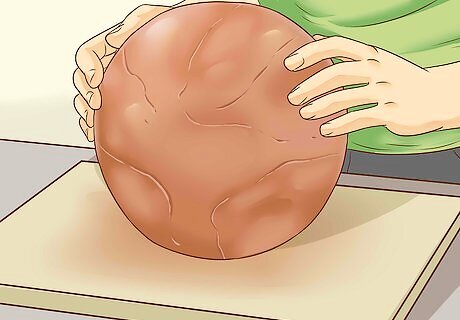
Form a ball. Roll out an oval and smooth the clay. The smoother you can make your clay in the beginning, the easier it will be to form your face. Depending on the size of your sculpture, it may be difficult to roll out a ball. If you're making a small sculpture, it shouldn't be a problem. However, if you're making a larger sculpture, you may need to sculpt out a neck as well. Keep in mind the proportions of your subject as you form the oval. You'll be adding clay to make the other facial features, but the oval should resemble the basic shape of your subject's head.
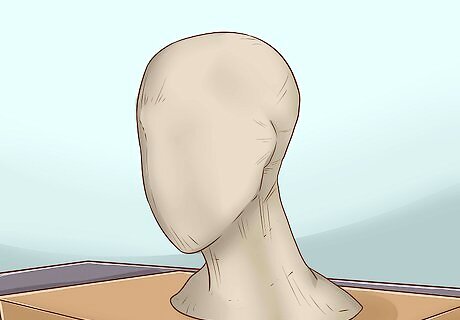
Try making a clay silhouette. An alternate method to making the basic shape of a face is to create a silhouette based on your subject's profile. When using this method, it can be helpful to start from the bottom of the silhouette and work your way up. Print out a profile photo of your subject. Make sure the photo is the size you want your sculpture to be. Roll out some clay about as wide as you'd like the nose on your sculpture to be. Lay it flat on a clean surface. Make sure you have enough clay make a full profile. Take the profile cut out and lay it on your slab of clay. Trace the profile onto the clay and cut away any excess clay. This should leave you with a slab of clay that is a silhouette of your subject. Start adding some clay to thicken the neck so you can stand your sculpture up as you add width to form the face.
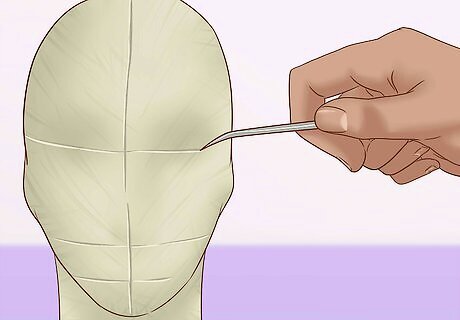
Add guidelines to mark out proportions. Using a needle or a rubber-tipped tool, draw a fine vertical line down the middle of the face. This is your line of symmetry. Draw a horizontal line halfway down your line of symmetry to mark where the eyes will be. Halfway between the eye-line and the bottom of the face, make a second horizontal line. This is where you will place the nose. Make one last line halfway between the nose-line and the bottom of the face to mark where the mouth will go.
Adding Facial Features
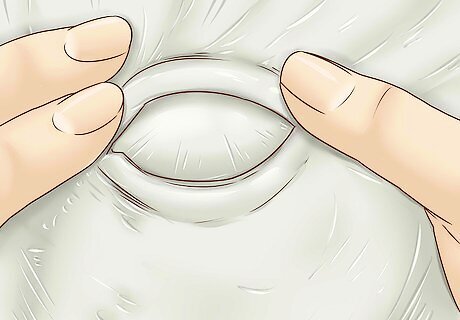
Form the eyes. Using a small spoon or rounded tool, start forming the eye sockets just under the eye-line. Take care not to gouge the clay. Work carefully and take your time. Try to keep your tool flat on the clay and use small circular movements. Smooth the clay out as you work. The sockets should be deep enough so that the eyes do not protrude from the sculpture. Add brow bones by rolling two small cylinders of clay and attaching them just above the eye sockets. Make sure the clay is workable so you can blend it onto the face. Using a small spatula, slowly work the brow bone into the forehead creating a small ridge. Work until you can't see any creases between the forehead and the brow bone. Form eyelids in much the same way as you made brow bones. Take two small cylinders of clay and place them just under the brow bone and into the eye sockets. Smooth out any seam lines to blend the eyelids into the rest of the face. Repeat the process to form the bottom eyelids. Roll small balls of clay to place into the eye sockets to act as the eyes. Round off the ball and form each eye in its socket. Try to keep the eyes symmetrical as you form them.
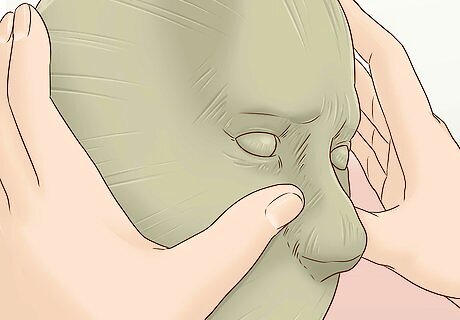
Make a nose. Form a pyramid from a separate piece of clay and attach it between the eyes. Blend the clay into the face, paying special attention to the bridge of the nose. The bridge should blend evenly with the brow-bones. As you make the nose check the profile of your sculpture. Some noses stick out further than others, and some turn up slightly. Refer to your photo reference to make sure you get the nose just right. The shape of a nose lends character to a face. Play around with different types of noses to see what effects you can create.
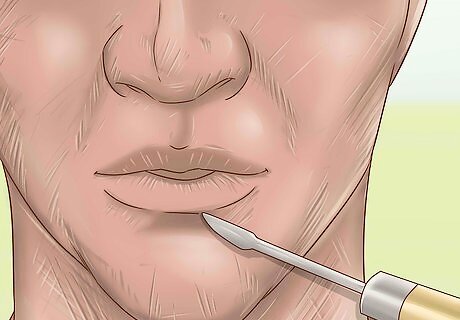
Hollow out the mouth area. To make a mouth on your sculpture, scoop out a little clay below the nose. Only take enough clay to form the inside of the mouth. You'll be adding lips to your face with separate pieces of clay. Using the same technique as you did to form the brow bone and the nose, add some clay to form the lips. Roll out a small cylinder and blend it into the face to form the upper lip. Forming a mouth takes a lot of practice. Keep referring to your photo reference and don't be afraid to start over if you need to. To form the bottom lip, leave some excess clay from the upper lip and bend it down, forming a horseshoe shape. Roll another cylinder of clay and attach it beneath the upper lip. Leave a little space between the two lips to make it appear as though the mouth is slightly open. Blend the clay until all the seams are gone.
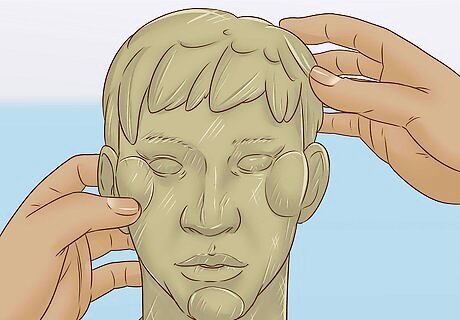
Fill out the face. Once you've added eyes, a nose, and a mouth, you might need to go back and build out the rest of the face. Add clay to make a chin, cheeks, hair, or even bulk up the forehead if you need to. When adding clay to your face, make sure you keep blending to make a seamless sculpture. It helps to work the clay a little to warm it up. This way it's easier to mold when you add it. Add ears by making small flat circles and attaching them to the side of the face. Keep the earlobe above the jawline, and connect the top part of the ear on the same path as the eye-line. Sculpt the details of the ear with a small spatula or needle.
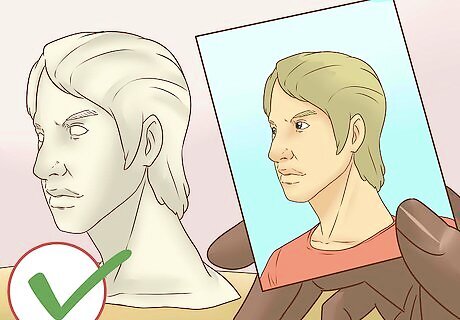
Fix any mistakes. Before you finish your sculpture, compare it to your photo reference. If you find anything you aren't happy with, go back and re-work it. Stay patient and think of your mistakes as opportunities to improve your skill. Once you're happy with everything, do a final blending pass over your sculpted face. Smooth out any seams, remove any excess clay, and clean up the sculpture.
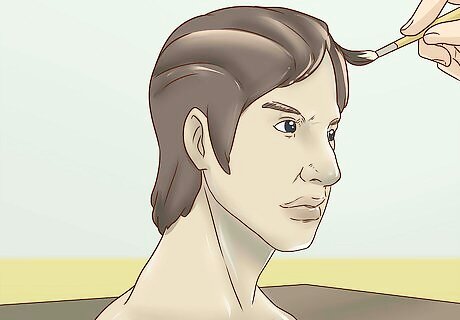
Add any finishing touches. Depending on the clay you used, you can either bake it off to finish your sculpture, or form a mold. Feel free to paint your sculpture, or add decorations to bring your art to life.













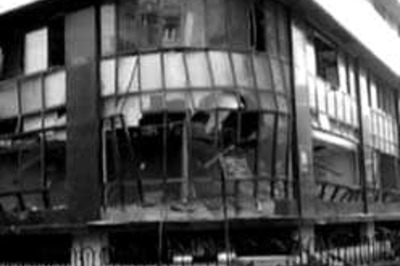





Comments
0 comment